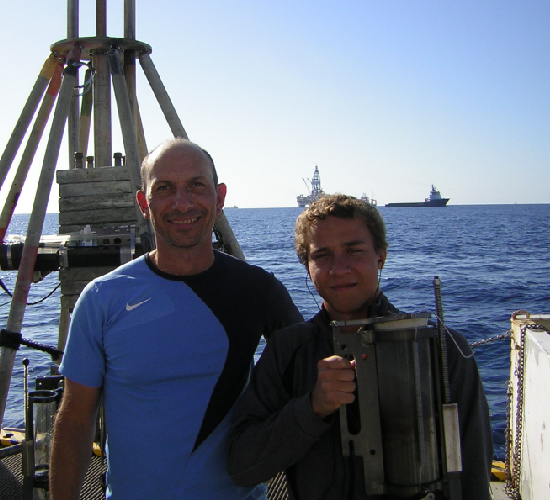Ph.D. Environmental Sciences (Geochemistry), University of Québec in Montréal (UQAM), 1997
M.S. Environmental Sciences (Geochemistry), University of Québec in Montréal (UQAM), 1992
B.S. Marine Biology, McGill University, 1989
Interim Vice Provost and the Acting Dean of Faculties
Regents Professor
Department of Marine and Coastal Environmental Science

"I used to have an open mind, but my brains kept falling out!"
- Anonymous
You'll find that the only thing you can do easily is be wrong, and that's hardly worth the effort."
- Norton Juster
(The Phantom Tollbooth)
A series of accidents...
Throughout my career, I have had the great fortune to have many incredible mentors, both men and women, who have opened doors and shown me the way to a world of discovery. The first such accidental guidance came from a high school teacher in Mexico, who disrupted (without knowing) my intentional path to art school by sharing his passion for science. As I set to follow this newfound path, I initially thought I wanted to be biologist until I met the man who would eventually become my graduate advisor and who lead me through the discovery of environmental geochemistry research. In a side-conversation after class, early in my senior year, he invited me to participate in an oceanographic research cruise on the St. Lawrence Estuary (Canada). Following the collection of a large number of water and sediment sampled, he invited to work in the lab as an undergraduate research scholar for the rest of the year. With a published peer-reviewed publication by the time I graduated, I was hooked. What then followed was years of fieldwork in remote locations (Canadian Tundra/Taiga, Greenland, North Atlantic, boreal and tropical lakes, the Arctic) and in the lab developing the necessary expertise to unveil untold stories of human impact and global change in multiple environments.
I find it particularly amazing that from a few millionth of a gram of a substance you detected in deep sediments, you could reconstruct the history of contaminant transport or natural vegetation shifts in an aquatic system, or the health history of inhabitants in surrounding metropolis. Finding the right tool, and looking through the right magnifying glass, is what really drives a lot of what I do. I think that there are still so many conundrums in trying to explain the natural world around us that we don't run a risk of getting bored any time soon.
Being able to communicate the mysteries of nature to future scientists, educators, policy makers, and the general public gives this activity even more relevance. However, as I evolved through my career and particularly my leadership experience, I have recognized the need for building interconnections across all fields of research and education, to create deeply meaningful knowledge and better-prepared global citizens. Decades later, I find ways to reunite my initial attraction for art and humanities with my long-standing love for science and technology. The beauty of academia is that is it a place where knowledge is constantly created, accepted norms tested and challenged, and creativity valued at the highest level. I couldn’t have “stumbled” in a better place and wish to share my love of learning with generations of students.
Because of my administrative role, I do not formally teach classes presently. However, I still enjoy working 1:1 with graduate students (when working as advisees in a graduate program) or with student workers as professional mentees. No matter the relationship, I will always encourage students to reflect on their experience in a larger context, identify the leadership skill they are developing while at the university, and integrate diverse mode of thinking in their problem solving. Because I have benefited for years from the generosity of my mentors, I am always happy to commit time and shared experience with students.
Patrick Louchouarn
Interim Vice Provost and the Acting Dean of Faculties
Regents Professor
Department of Marine and Coastal Environmental Science